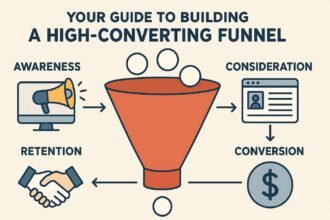Demystifying First-Party Data: An In-Depth Exploration
First-party data is the information collected directly from business customers, consumers, or audience—and it’s at the foundation of every productive brand-marketing and business-growth initiative. It includes all the data points brands gather from website or app activity; call centers; surveys; registration forms; purchase behaviors; offline retail locations; social channels and customer relationship management (CRM) tools; and account, billing, and fulfillment inquiries.
First-party data meanings and definitions as well as the fundamental reasons why it’s important are the introductory components of a multisection series that explores the following topics in detail: first-party data collection methods; information privacy and compliance; possibilities of first-party data analysis; using first-party data for marketing; integrating first-party data with other data sources; challenges involving first-party data; examples of companies that leverage first-party data effectively; emerging first-party data trends; planning a first-party data strategy; and assessing the success of such strategic efforts.
Exploring First-Party Data Fundamentals
First-party data plays a crucial role in marketing and brand building. By enabling the creation, delivery, and measurement of personalized online experiences, it helps brands nurture customer relationships and build brand affinity. First-party data refers to information that consumers provide directly to businesses and brands. It can take many forms, such as data entered by customers when they place orders or book appointments—not to mention the data created during the course of providing services. It includes data gathered through direct interactions with a brand, capture points that shed light on the customer relationship with the brand, and that which illuminates ongoing preferences and behaviours.
Types of first-party data include subscription e-mail addresses, membership or loyalty numbers, transactional data, information collected from business partners, location data, contact centre feedback, customer surveys, video, social, and more. With the growth of digital footprinting, it now also includes customer data collected on sites and apps through cookies (subject to explicit consent). These digital trails present exciting opportunities; they allow marketers to efficiently and accurately distribute content, experiences, or contextualized advertisements relevant to consumers at precise moments in their journeys.
Significance and Definition
First-party data is considered by many to be the most valuable data for brands to own and leverage when engaging customers. Brands have an advantage in gathering more reliable, accurate, and insightful data—direct from the source through their own channels. Using first-party data strategically enables personalization along the customer journey, supports targeted advertising, and enhances customer experiences. Moreover, the significance of managing first-party data within a business continues to grow as regulations shape the data privacy landscape.
First-party data encompasses information that a company collects directly about its customers and prospects. Such data are gathered with consent—either explicitly or implicitly—during interactions with the brand, be it browsing a website, signing up for a newsletter, registering for an event or webinar, or making a purchase. It includes: data that companies own about their customers; data that organizations collect directly from their audiences; and data that brands collect through their first-party data collection strategy. An example is a hotel’s database containing confirmed stay dates, payment information, and customer preferences.
Categories of First-Party Data
Why is first-party data important? Brands can now better protect the data they own by focusing on collecting and maintaining accurate first-party data. Understanding that data is a business asset these days, brands should ask themselves how they plan to apply that data meaningfully, whether for personalizing the customer experience or enabling seamless customer journeys.
Data is generally divided into three primary categories: first-, second-, and third-party data. First-party data is customer information collected directly from a brand’s own audience. Brands can then repurpose that data to create a more personalized experience or to help find new audiences. Actions such as a customer filling out a mailing list subscription or buying a product provide valuable data points that help brands comprehend and address the needs of their customers.
Collecting First-Party Data
Major technological advances over the past 25 years have enlarged and lowered the costs of collecting and processing first-party data. The widespread use of smart phones and implemented mobile applications make it possible for brands not only to communicate with customers, but also to readily capture and mine the data now streaming into their databases. Prominent examples include Starbucks, which offers members the ability to use its mobile app to order products for pickup at a retail location or have them delivered. The app also enables customers to manage their Starbucks Card, link the card account to their Starbucks Rewards account, and send mobile Starbucks Cards. The data generated by each customer interaction is stored, then mined to deliver personalized experiences that build stronger customer relationships. On the business-to-business (B2B) side, Salesforce Lightning offers B2B companies the ability to capture first-party data with Salesforce Surveys—a simple and easy tool for gathering first-party information while personalizing interactions, strengthening customer relationships, and uncovering valuable insights that allow for more targeted marketing.
Not all first-party data collection is as simple as tapping a few buttons on a mobile device. The painstaking process of collecting first-party data typically begins with the company developing a repository system specifically designed to capture relevant first-party data, then invites existing and potential customers to contribute information in exchange for the value associated with doing so—whether it be content, services, or discounts. For example, a company might host a website where consumers can become registered members to unlock premium services or content by submitting a series of personal questions. The collection process is then repeated with every interaction and transaction.
Methods of Collection
First-party data is collected using several methods. On a website, the data collector might request name and email address to create an account or send a newsletter. It might be gathered automatically when a browser loads a web page, using cookies to track activity, or through API connections to other data streams, such as that of a mobile device running an app. Retailers might look at a customer’s buying patterns and match those to demographic data gathered when customers use a store credit card. Brands in B2B markets analyze first-party data in their CRM system to discover how customers engage with marketing tactics such as exhibit visits, e-book downloads, and newsletter opens.
Several leading first party data platforms go beyond consolidation and analytics. They also provide services for data cleansing; identification of desirable prospects; developing messaging for each segment, account, or individual; delivery of advertising; personalization of websites; and reporting of outcomes.
Tools and Technologies
A number of tools and technologies are involved in collecting first-party data. Cookie consent banners are a common feature on websites; these pop-ups ask users whether they allow the website to collect data through cookies — small text files that collect information about users’ activities. The ability to accept or reject cookies complies with the EU General Data Protection Regulation (GDPR) and the California Consumer Privacy Act (CCPA). Cookies are essential for keeping users logged in to websites and for remembering settings such as language or font size. Other tools and technologies include shopping carts, live chats or chatbots, comment boxes, email subscription boxes, registration pages, and social media posting boxes.
A Customer Data Platform is a technology used to collect data from company websites and apps. Data can be gathered directly or through cookies, web beacons, tag managers, IP address lookup, or data stored in other systems. The collected data helps create unified customer profiles, analyze customer groups, deliver more effective communication to the right groups, and assess the impact of marketing activities and campaigns. Audience targeting can be performed directly through a Customer Data Platform or by importing segments into solutions such as Google Ads, Meta’s Ads Manager, demand-side platforms, or marketing automation platforms.
Data Privacy and Compliance
Data privacy represents a central issue in digital marketing. Legislations such as the European Union’s General Data Protection Regulation (GDPR) and the California Consumer Privacy Act (CCPA) have increased consumers’ rights upon collected data (personal data for GDPR and nonanonymised data for CCPA). The two legislations share many similarities, for example, the requirement for companies to provide data transparency about the collected data, and the duty of companies for erasing data upon customers’ request. However, there are also several differences: differentiation in geographical scope, the detailed definition of data, exemptions, and personal rights. The GDPR is a comprehensive data protection legislation within the European Union that applies to all residents within the region. It governs the collection, use, storage, and transfer of personal data, and defines broad personal rights. The CCPA is specific to California residents. Its scope excludes anonymised or non-personal data. Lawmakers consider a set of personal rights different from those of the GDPR.
First-party data marketers should ensure that the data is collected in compliance with closely related regulations. Best practices usually include “not making non-essential fields mandatory”; “having a cookie policy and privacy policy and making a copy available for the customer”; “only marketing to those who have given prior opt-in for marketing purposes”; and “preparing clear and transparent notices, disclosures, and options for users to download their data or delete their accounts”. Beyond those practices, a more advanced implementation can integrate data regulation compliance into a broader data governance framework, which defines policies, roles, responsibilities and processes for data based on corporate strategies and objectives.
Understanding GDPR and CCPA
Companies collecting first-party data must comply with data protection regulations such as the European Union General Data Protection Regulation (GDPR), a regulation in EU law on data protection and privacy in the European Union and the European Economic Area, as well as the California Consumer Protection Act (CCPA), a state statute intended to enhance privacy rights and consumer protection for residents of California (United States). GDPR became enforceable beginning in 2018 and CCPA in 2020 in response to growing concerns among consumers about the mishandling of their personal data by large corporations. Companies collecting, using, or processing personal data for California residents must adhere to CCPA requirements. Both GDPR and CCPA require companies collecting personal data to offer users clear, straightforward options to opt in or opt out of providing data.
GDPR considers data to be “personal” if it relates to an identified or identifiable natural person. Customers have the right to access collected data and request that information be deleted. Violators of GDPR can face penalties up to 4 percent of global revenues or ?20 million (whichever is greatest). More than 60 fines have been levied on various companies, totaling more than $1.3 billion USD. The impact on European businesses has been significant, with 58 percent of organizations reportedly unable to affirm “full compliance” with data protection and privacy regulations. Organizations that process or collect the personal data of California residents must also comply with CCPA, which provides new consumer privacy rights and enforcement mechanisms.
Best Practices for Compliance
Companies can use personalization engines to uncover behavior patterns within first-party data. Then, they can apply campaign management tools to design personalized offers and experiences for customers and prospects. Integrating personalization engines with customer relationship management systems enables brands to analyze purchase propensities and design cross-, up-, and down-selling campaigns. Brands can also create retargeting campaigns and prevent competitive poaching. First-party data can help synchronize offline and online campaigns and inform bidding strategies in programmatic advertising.
First-party data professionals face challenges that stretch beyond brand and marketing managers. Data privacy has become a critical concern when companies collect data about customers. Brands must exercise caution when gathering data to avoid infringing on privacy rights and must secure that data to prevent potential data breaches. The European Union’s General Data Protection Regulation (GDPR), enforced on 25 May 2018, expanded and updated existing data-privacy protocols. The U.S. state of California has enacted the California Consumer Privacy Act (CCPA), with enforcement beginning on 1 January 2020. Both GDPR and CCPA provide guidelines for the ethical collection of personal data.
Analyzing First-Party Data
Once a business has gathered first-party data, the next step in the process is to analyze it. Data analysis techniques include descriptive, diagnostic, predictive, and prescriptive. The first describes past trends and explores patterns or correlations, whereas the second investigates the causes of patterns and correlations in the data. The third then moves beyond the historical data to forecast possible changes or outcomes, and the fourth makes recommendations based on the possible outcomes identified by the predictive techniques.
Useful data analysis software includes Microsoft Excel, IBM Watson Analytics, Tableau, Google Data Studio, and Adobe Analytics. Interpreting data for a marketer means knowing how the insights gleaned from the data relate to the market. For example, if the data show that one segment is buying more than previously but the average price in that segment is dropping, it is useful to understand if that drop in price is being caused by an increase in the amount of cheaper products being sold, or something else. Drilling down for these answers can result in a better marketing approach.
Data Analysis Techniques
First-party data offers a unique advantage to brands: it reveals specific information about the people they actually want to reach. Unlocking this goldmine first requires organized collection followed by insightful analysis. First is organizing the collected data to create a 360-degree view of each customer or a specific business goal such as conversion or retention. Next, analysts explore the datasets with specialized tools and techniques to uncover deeper trends and connections. Finally, these insights help answer business questions like “How do we find those most likely to buy from us?” or “How do we reach these people most effectively?”
Data analytics entails examining raw data to draw conclusions about information, encompassing methods like descriptive and diagnostic analysis, as well as advanced techniques such as predictive analytics and artificial intelligence. With the ability to capture and secure vast quantities of first-party data, businesses can maximize the potential of a 360-degree view by employing visualization technologies alongside AI technologies including machine learning, deep learning, natural language processing (NLP), and text analytics. These combined analytic capabilities enable granular segmentation and customer insight, with the most advanced organizations leveraging such comprehensive strategies to gain a competitive edge. Indeed, the brand that understands its customers best ultimately stands to win.
Interpreting the Results
Interpreting First-Party Data Results is a vital step in the conversion of raw data into insights capable of informing and shaping marketing strategies. Brands collect large sets of information through various methods and devices, including website analytics, mobile applications, CRM systems, ERPs and partners. Google Analytics LT view could be used as a solution to visualise the data in an accessible way. From bundles of activities aimed at acquiring or retaining customers, the information is classified and filtered into manageable categories, subsequently linked to the business context to provide meaning and support intelligent decision making.
Execution time frames play a fundamental role: the moment chosen to collect, classify, cross-reference or decrypt determines the usefulness of the insights. For example, a prospective shopper who browsed the collection a fortnight ago bears less significance today than someone shopping and adding items to the cart right now. Interpretation must be an agile process, adjusting to the pace of the business and updating the strategy with contemporaneous knowledge. Setting aside a moment in the daily or weekly schedule to consider these aspects guarantees that the maximum advantage is taken.
Utilizing First-Party Data for Marketing
A brand’s first-party data consists of information that it collects about its customers and prospects first-hand. Brands collect and use first-party data for a variety of purposes. In marketing, first-party data enables brands to better understand customers by providing insights into how visitors behave on their website, what intent signals they are giving off, and what their interests are. Brands use this insight to personalize the customer experience, ensure that their website content is the right fit for their customers, and deliver targeted advertising.
Building a data-driven marketing approach also allows brands to make smarter decisions, eliminate waste, and improve their return on ad spend. The process begins with collecting and storing the raw first-party data, which then enables data analysis. Next, data analysts turn the raw data into actionable insights. Ultimately, a brand will leverage those insights to enhance its marketing efforts.
Personalization Strategies
Personalization lies at the heart of first-party data use. Brands often position personalization as a set of rules, such as serving an ad for ski boots when a user clicks on a skiing website. As a result, discussions about personalization often circle back to the mistaken question: “Which first-party data type should I use for personalization?”—a query that lacks sense. The approach should instead be inverted: examine what can be achieved with each type of data. For example, transactional data can fuel upsell and cross-sell offers, while demographic data is more useful for targeting.
High-quality first-party data and sophisticated analysis enable brands to pinpoint their most marginally profitable customer segments. Targeted marketing messages can then focus on these groups. However, at some stage, maximizing profitability demands simple “response maximization”—identifying users in market who are most likely to respond to an offer and delivering it to them. Depending on the nature of the data, prospective modeling techniques can be effective by segmenting lookalike audiences or identifying users most likely to convert or click.
Targeted Advertising
First-party data is critical to the success of a targeted-advertising strategy. Its usage can significantly improve key marketing metrics by enabling marketers to develop advertising and promotional offers with increasingly granular audience targeting. The principal advantage of first-party data is that it empowers a brand to approach consumers who have already engaged with the company rather than targeting generic demographics or sub-demographics. First-party data is therefore highly prized despite it being challenging and costly to collect. The best first-party data comprises accurate customer-profile information and historical transaction data.
The most frequently used first-party data attributes for targeting are transaction and event history, since active customers are much more likely to respond to a promotional offer. Purchase categories, customer preferences, demographics, transaction amounts, timestamp—even ratings, reviews, and social sharing—all provide valuable grounding for targeted-advertising offers. Furthermore, purchase-activity patterns, such as transaction frequency, day of week, and time of day, can help determine the best channel and timing for promotions. First-party data from internal sites and social-media channels, as well as data obtained from emails and surveys, enable sharable offers that may stimulate organic awareness.
Integrating First-Party Data with Other Data Sources
First-party data offers clear advantages for marketers, but it is best considered as one part of a broader marketing data ecosystem. Second-party data consists of another company’s first-party data, shared via partnership or exchange; a company might acquire the loyalty data of its retail partners to better understand end consumers, for example. Third-party data comprises large-scale syndicated datasets aggregated from multiple sources—external behavioral, personal, and demographic data overlaid on a company’s contacts and customers. An advertiser might supplement its behavioral data with third-party data about these individuals’ hobbies and other interests or add third-party email addresses matching a different profile. Although privacy restrictions and the demise of third-party cookies have reduced the use of third-party data in marketing, it remains a component of many marketing data strategies.
With each additional data source, marketers become increasingly able to understand which messages resonate with a given audience, allowing for more impactful ad targeting. A brand’s first-party data serves as a foundation to support and make better use of other data.
Combining with Second-Party Data
First-party data is information collected directly by a company from its own customers, prospects, or audience. It can include purchase history, website visitor information, subscription data, and loyalty cards. Second-party data is someone else’s first-party data that is collected and then shared. For example, a manufacturer might share its customer data with a retailer in exchange for retail purchasing behavior. Third-party data is aggregated from a variety of anonymous sources, often processed, packaged, and sold via an online data marketplace. Combining first-, second-, and third-party data enables brands to delve deeper and target more precisely.
Brands can merge second-party data with their own first-party data to bridge supply and demand. Here, second-party data serves as a catalyst, helping brands better understand the profiles of those in the marketplace who want to buy their products or services at a given time. Purchasing and sales data—as well as the preferences of real-world business customers—can be matched with commercial indicators via outside sources to maximize marketing efficiency at any stage in the buying journey.
Leveraging Third-Party Data
Once brands have defined their marketing objectives, understood their consumers, and collected their first-party data properly and in compliance with the law, they can put this data to work. Data analysis methods such as RFM (recency, frequency, and monetary value) analysis, response analysis, and event/behavioural analysis can reveal which audiences to focus on and what kinds of campaigns work well. These insights can then be used for marketing activities with a clear connection to first-party data. The easiest way to initiate first-party-data-driven marketing is through personalization—which adapts the message to specific user groups or individual users. Personalization spans aspects such as content, channel, time, device, location, and demographics, among others. Another approach is targeted advertising, which demonstrates ads exclusively to specific target groups or buyer personas.
Indeed, first-party data becomes a cornerstone of all brand marketing activities when manipulated accordingly. To harvest its full potential, brands should also filter and refine their first-party data through the integration of second- and third-party data sources. Second-party data is in-house data sourced from other organizations; it is typically both valid and exclusive. Third-party data is collected and processed by external providers, often from a wide array of data sources, and then sold on the open market. If brands integrate these additional data streams in line with their marketing goals, they can create more refined, comprehensive, and effective targeted advertising strategies.
Challenges in Managing First-Party Data
Managing first-party data offers numerous benefits to brands. Its role in marketing, legal, and technology spheres must be addressed to optimize its use.
As brands collect first-party data through direct customer interactions, they may also acquire personal information. This necessitates compliance with the General Data Protection Regulation (GDPR) in Europe or the California Consumer Privacy Act (CCPA). These regulations grant consumers rights over their information and require companies to incorporate these into their privacy management frameworks. Companies expecting customer interactions should prepare to manage first-party data accordingly.
Data Quality Issues
First-party data offers the promise of greater granularity and therefore better decision-making and targeting, but it is not infallible. No dataset is ultimately error-free, including a brand’s own first-party data, and there is a range of potential data-quality issues that can be encountered during the collection and storage of data. One principal issue is that data can be inaccurate, outdated, incomplete, irrelevant, or duplicated. Second, some users may supply businesses with inaccurate data, for example, by providing out-of-date or deliberately false information in response to lead-generation forms, coupon offers, newsletter subscriptions, product registrations, or surveys. In other cases, inaccurate data may arise through technical glitches or bugs in the various systems used to collect data, or from human error during data processing.
Additionally, different sources of first-party data may conflict with one another. For instance, a physical customer transaction at a brick-and-mortar retail location made in-person using a credit or debit card can be linked to a customer’s name, location, and other identifying data, whether that be acquired from a loyalty program or from a purchase carried out on a brand’s e-commerce website. However, the customer may use a different address on each channel, or one of the two addresses may have become obsolete over time. Certain types of first-party data are also subject to changes in their own right; an email address, for instance, can become inactive if a user forwards it to an alternative email address, or through the use of Gmail-style “plus” aliases. Crucially, changes to first-party data may mean rendering the data non-compliant with privacy regulations.
Technical Limitations
Brands find first-party data a dream come true. It’s direct, rich, reliable, brand controlled, and, when used properly, ensures that marketing money is spent effectively and efficiently. Yet even with the many advantages of first-party data, it’s only as good as the quality of the data, the analysis, and the marketing strategy.
On the more technical side, brands must work within the constraints of data management platform (DMP) design. Many of the available platforms suffer from slow data upload rates and restricted data storage capacity. In certain instances, data cannot be managed at the level of visible activity or segmented granularly. This limitation appears in drawdown when audiences become too narrowly defined because the platforms cannot process audience sizes below a given threshold.
Case Studies of Successful First-Party Data Use
In the retail sector, Hewlett-Packard (HP) was an early adopter of multichannel data management, moving beyond conventional approaches represented therein by customer relationship management. Today its business approach leverages marketing-specific customer data integration software. The strategy engages more deeply with business customers and is known internally as the “syndicated data project”. Valuable customer insights are gained by blending first-party data with multiple feeds of second-party and third-party data. The initiative draws on data from dedicated B2B customer websites—in the style of profile-sharing—as well as data from fulfillment and purchasing systems. Although the concept is driven by marketing’s need for greater precision in online spending, its influence extends far beyond advertising and into call-center and service-related support.
At Peapod, one of the largest online grocery stores in the U.S. and owned by Ahold, a loyalty card program dedicated to first-party data has been established alongside an existing margin-generator loyalty program. Top-line growth and better targeted communications for store and online promotions represent two of the key benefits. If, for instance, a loyal cardholder has purchased barbecue food in the past, targeted advertising from Peapod might deliver relevant content to their Facebook account. More general marketing messages about back-to-school sales might be focused on households with children below a certain age.
Retail Industry Examples
First-party data use cases in the retail sector frequently center on delivering tailored consumer experiences. Leading fashion retailer Zara segments its customers by gathering first-party data from its mobile app, then serving them with targeted promotions via SMS text messaging and push notifications. French pharmacy and cosmetics retailer Sephora has introduced both a virtual companion and a virtual “try on” feature leveraging the company’s first-party data to tailor product suggestions for customers. Cemex, a leading supplier of cement, ready-mix concrete, and aggregates throughout the Americas, recently utilized first-party data to cross-sell its solutions in its B2C and B2B markets.
Cemex’s Oaxaca plant in Mexico developed a digital platform for truck drivers to create a membership to advance their credit. Drivers accumulated points for transactions processed through the app, which created the first-party data foundation for the company to create targeted offers based on the driver’s needs and activities. This enabled Cemex to improve supply-chain interactions, deliver personalized promotions, and incorporate the community voice into marketing messaging, all while embracing privacy regulations.
B2B Success Stories
First-party data has created massive opportunities for online retail, travel, and many other sectors, but it is also revealing new possibilities in the B2B environment. Among the more ambitious brands exploiting the potential of systematically collected and carefully analysed first-party data is Eyecademy, A global leader in eye-care industry training, founded in 2008 by Dr Neha Varma (a practising refractionist) and Dr Tania Ahluwalia (a behavioural optometrist).
Eyecademy passionately believes that education changes lives and has grown into one of the most eminent worldwide platforms that provides training in vision, eye care, runway presentations, optometry, eye-care business, professional development and much more. Eyecademy has links with the top optometry schools in the US and in India and boasts over 5,000 registered users.
Future Trends in First-Party Data
Tomorrow’s first-party data innovations will be driven by rapid advances in technology. Capitalizing on that technology will allow brands to deliver an even richer customer experience. For example, advances in artificial intelligence can help brands anticipate what customers want and develop a more personalized brand experience.
Future advancements will enable marketers to collect data during customer interactions with advertising channel partners. To make the most of that opportunity, it will be essential to ensure the safety and privacy of the data, which might include device-level information like targeting IDs, IP addresses, cookies, or browsing history.
Emerging Technologies
Advanced technological tools profoundly influence the ways in which brands collect, analyze, and utilize first-party data. The rapid evolution of artificial intelligence (AI) and machine learning (ML)—both subsets of business intelligence—helps organizations extract valuable insights related to their customers’ preferences, behaviors, and intent. The capacity both to augment and automate data analysis enables companies to transform large volumes of data into real-time, actionable information-holding sharper marketing decisions, developing personalized experiences, and targeting advertising more precisely.
Innovative machine learning techniques can generate predictive models that estimate potential shifts in consumer demand, enabling companies to optimize their supply chain, reducing wastes—and for retailers, offering relevant products at the perfect time. On the other hand, natural language processing—the primary technology behind chatbots—allows operations to automate customer service interactions while unlocking insights into customer preferences.
The Role of Artificial Intelligence
Equipped with a clear first-party data strategy, brands can leverage artificial intelligence (AI) to support data analysis, integration, delivery, activation, and measurement. AI enables companies to monitor marketplace trends and assess the internal health of each data source. The technology then automatically suggests the most appropriate source to activate based on the target audience definition and campaign objective. AI-derived compass-style scoring or sophisticated forecasting predictions can further refine source selection, ensuring higher marketing precision. With these capabilities, marketers can shift from executing to designing marketing programs, where creativity, customer experience quality, content, and channel decisions can be optimized.
AI algorithms can also bridge brand signals to the closest matching audience in each ecosystem, facilitating the automatic generation of look-alike segments across major demand-side platforms (DSPs) and social platforms. Beyond data source orchestration, AI-driven forecasting models optimize the tactical deployment of paid media budgets across various sources, bids, channels, and currencies, maximizing performance toward the predefined campaign objective. Data quality issues can be addressed through cleansing and enhancement methods, delivering a cleaner dataset for advanced audience modeling. Lastly, AI aids in the attribution of offline metrics to paid media campaigns, and its profiles and scoring capabilities enable intelligent delivery of digital advertising offers via customer relationship management (CRM) or sales force automation platforms.
Building a First-Party Data Strategy
First-party data is information a brand owns which can be derived from customer interactions on a website or from a customer relationship management system. First-party data quite simply is data collected directly from customers and can include descriptive data, behavioral data, and transactional data.First-party data is the data a business collects from its customers—either prospective or actual—directly through their relationship with the brand. For example, data collected via a retailer’s click-and-collect operations, or collected during direct communications with customers, such as those gathered through customer relationship management (CRM) or contact centre interactions. Brands can also enrich their existing first-party data with second- or third-party data. For example, American Express has used location data from Uber and Expedia to better understand cardholder preferences and behaviors when it comes to traveling.
Recognising that first-party data generated or collected by a consumer-facing brand is one of the most valuable assets a business can have, the question arises where to begin or how to get the most from these data assets. Steps in developing a first-party data strategy include setting goals, implementing the strategy, and key tactics.
First-Party Data Strategy: Steps for Success For a first-party data strategy to be successful, it is crucial that the right end goal is defined—the challenge being that the wrong goals will lead to poor investment choices and ultimately to failure. Defining the wrong end goal can also lead to missed opportunities. For example, there is a tendency to focus on performance marketing when the potential of the data typically extends far beyond this area. For instance, a mass-market retailer might look to build household segments for personalization of digital display advertising. However, there is no reason why this same data might not also be used to support the retailer’s market research team.
Setting Goals and Objectives
Without first-party data a brand is, in effect, flying blind and forced to rely on gut-feel marketing. Seamless access to reliable customer data supports better decision-making and helps create relevant experiences that stand the test of time. It also allows brands to adapt and respond to change quickly because there’s real insight guiding every step. Without a clear destination, however, the best marketing strategies are guessing games. Brands must define firm goals and objectives before setting out on their first-party data journey.
It is advisable to resist the temptation of rushing into first-party data collection. A successful brand marketing strategy begins with clearly defined goals and measurable objectives. These should be sufficiently broad to encompass the full potential of first-party data, yet sufficiently precise to yield tangible business benefits. Therefore, before developing the data-collection strategy, brands should explore possible uses for first-party data and gain a deeper understanding of its value.
Developing an Implementation Plan
Once that foundation is laid, brands should turn their attention to building the first-party data “engine.” Clear, actionable goals must then be defined, such as improving customer understanding, activating for marketing, or blending to increase the precision of audience targeting. Those tactical objectives, in turn, will dictate the technology requirements.
While objectives differ, key questions remain consistent. How much data can be retained? What data can be collected and analysed in real time to act quickly? What systems can be integrated? And how can collection meet compliance requirements? Advanced audiences will also consider their ability to organise data internally and externally and to consume it easily across channels and goes to market. In addition, planners need to identify necessary policies and processes.
Measuring Success with First-Party Data
First-party data strategies are built on analytics measured by metrics—such as closed sales or repeat visits—to draw actionable conclusions. The brand stores raw data in a customer data infrastructure (CDI), ensuring preservation of customer records. Key performance indicators (KPIs) align with overarching goals, guiding analysts in transforming source data into business intelligence. Given the extensive features of a CDI, companies define project plans and timelines to sequence first-party data efforts within a one-year horizon.
Advice offered by Search Discovery’s Dawn Anderson and Kate Brutlag centers on first-party data. Search Discovery’s Kate Brutlag charts metrics that interest Data Management Platform (DMP) vendors in an article for Econsultancy. Dawn Anderson explores ways to measure success with first-party data and, still more, in the Final Mile of Analytics.
Key Performance Indicators (KPIs)
By setting specific goals, brands can identify the KPIs necessary to measure the success of a first-party data strategy. In general, any KPI related to conversions, revenue, or costs is relevant because of the positive effect on audience targeting and segmentation. More precisely, the following KPIs can indicate if the utilization of first-party data is delivering the targeted business value:
• Increase in revenue or profit in a specific business unit;• Increases in retention rates and conversion rates in audience segments created using first-party data;• Reduction in advertising costs;• Higher response rates for CRM campaigns, e-mails, or re-targeting; and• Ability to perform look-a-likes for prospecting.
Suitable KPIs must be closely linked to the specific challenges at a given company. The business unit that did not perform well before using first-party data should be able to highlight how those problems have been resolved by the use of first-party data. That business unit must be involved in setting the first-party data goals.
Feedback and Iteration
Using first-party data effectively is crucial for continuously honing marketing efforts and increasing the relevancy of engagement with customers. Examining key performance indicators related to first-party data—in isolation as well as in context with other data sources—helps brands define future approaches. Whether the aim is establishing closer relationships with individual customers or increasing the value of all their marketing activities, maintaining feedback loops is vital.
First, evaluating key performance indicators is fundamental. Retail brands can, for example, analyze the promotional-response performance of segments defined by first-party data, such as customers with a history of purchasing six packs of beer. For B2B brands, insights based on first-party data might support cross-sell or up-sell campaigns, or foster closer collaboration with distributors. Examining the rates at which consent is secured for the use of first-party data can further illuminate areas for adjustment and improvement. Second, brands should establish feedback processes by gathering insights from business and marketing leaders. Activities that suggest how the business intends to engage with its existing customers may reveal new data sets to capture or distinct messages suited to prevailing circumstances.
Conclusion
The first-party-data goldmine is full of brand-building treasures. Mining it takes the right strategy backed by the right technology. It requires meticulous collection, prudent storage, and astute use. Brands that craft an effective first-party-data strategy, targeting business goals and enabling future success, will consistently outpace those delaying their approach.
Every company can make first-party data advantageous. Cost reductions, better marketing efficiency, and elevated consumer satisfaction levels together build stronger brand equity. With the right plan, brands not only unlock the value of first-party data but also safeguard their place in the marketplace.












